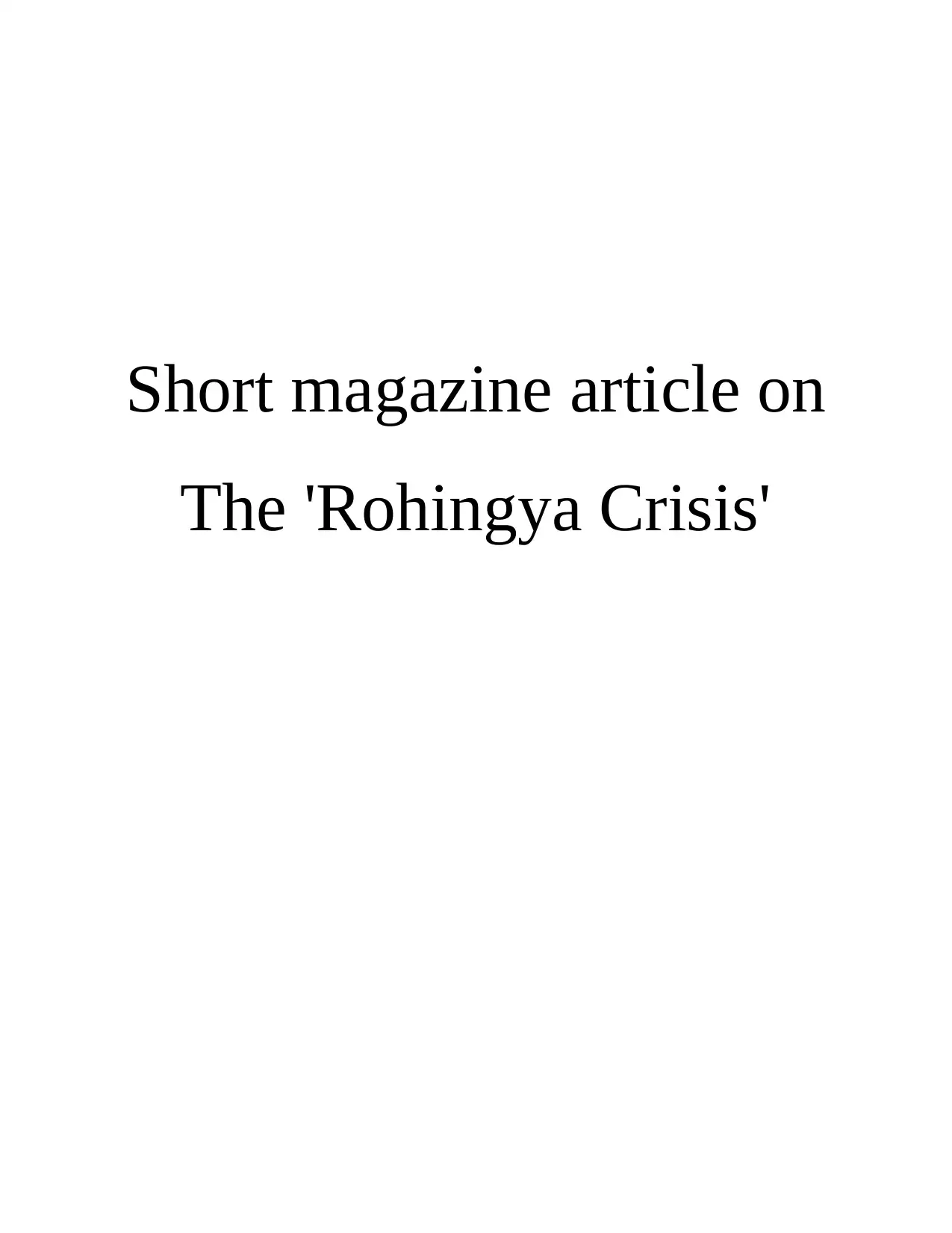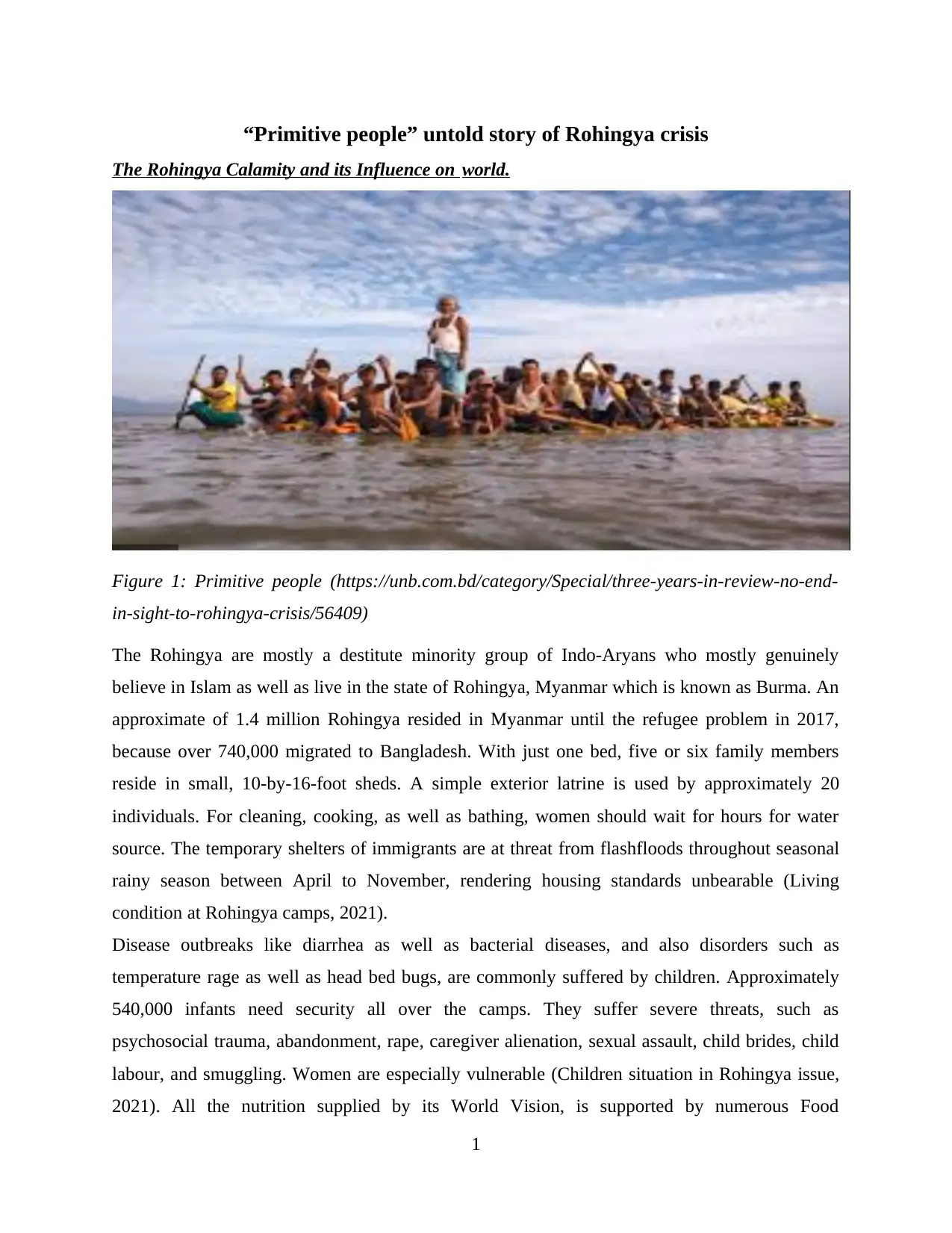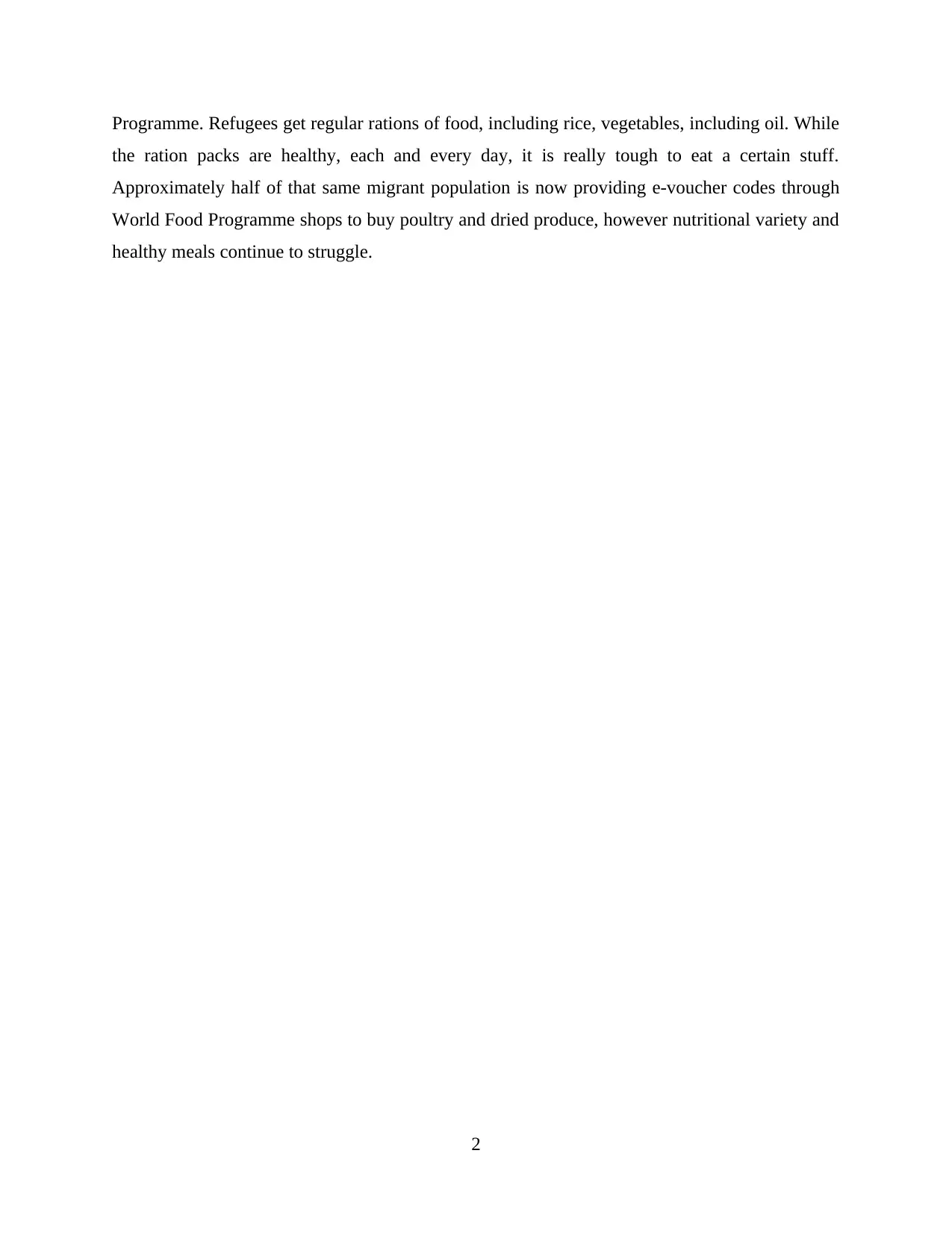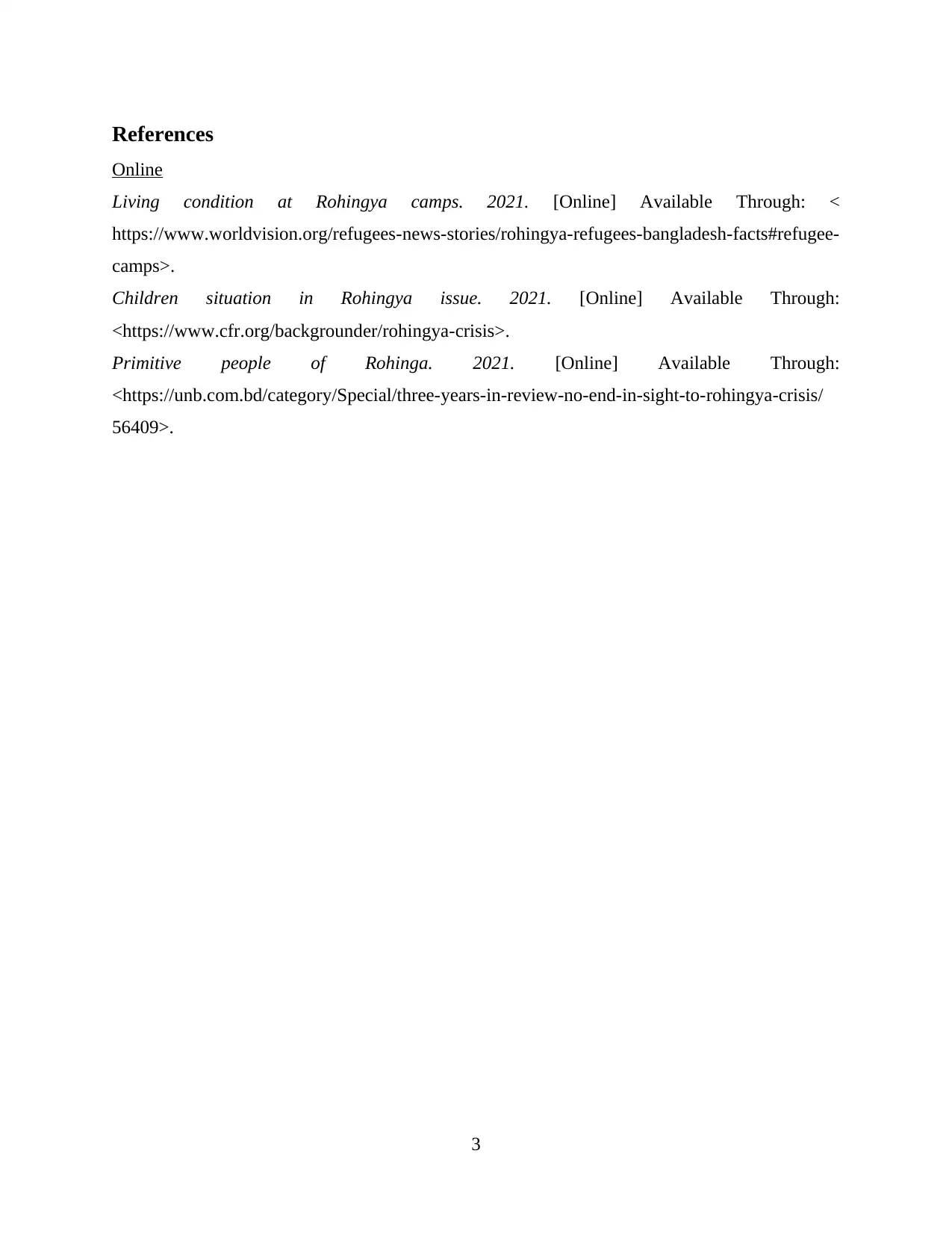The Rohingya Crisis: Causes, Impacts, and Humanitarian Challenges
VerifiedAdded on 2022/12/27
|5
|408
|88
Report
AI Summary
This report delves into the Rohingya crisis, examining the plight of the Rohingya people, a minority group primarily residing in Myanmar. The report highlights the mass migration of over 740,000 Rohingya to Bangladesh due to the crisis. It addresses the challenging living conditions in refugee camps, including overcrowded shelters, inadequate sanitation, and the risk of disease outbreaks. The report also discusses the vulnerability of children to various threats, including psychosocial trauma, and the efforts of organizations like World Vision and the World Food Programme in providing food and assistance. It references online resources to support the information presented, providing a comprehensive overview of the humanitarian challenges faced by the Rohingya population.
1 out of 5






![[object Object]](/_next/static/media/star-bottom.7253800d.svg)